
Atlas F1 Assistant Editor
They say a picture is worth a thousand words. Well, what about numbers? The Atlas F1 Charts Center is a collection of graphs aimed at providing a visual representation of the drivers' and teams' performance throughout the Formula One season. So if you want to know who's up and who's down, it doesn't get clearer than that
France Charts
Chart I: The following chart shows the actual difference in distance between the pole sitter and the rest of the grid - taking into consideration the circuit's lap length and the best time each driver has set in the first qualifying session. If the pole sitter completes a full lap in the fastest time, then all other drivers will complete less than a full lap in the very same time. The slower they are, the less distance they will be able to complete at the same time as the pole sitter. The difference is therefore displayed in metres. (Note: drivers outside the 107% may be excluded.)
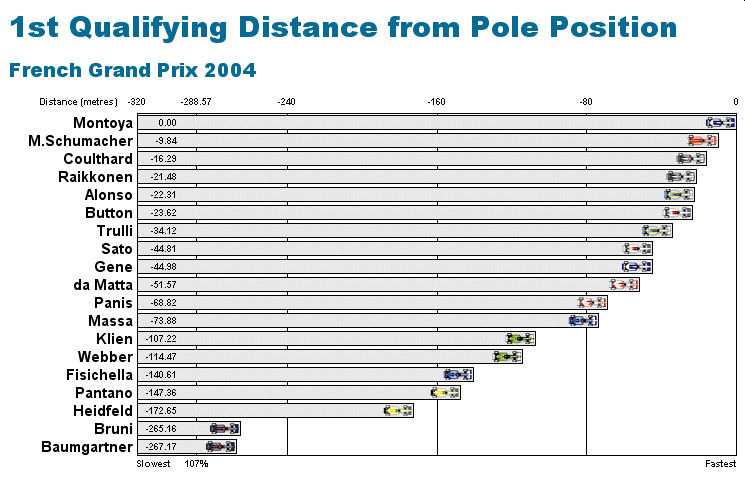
Chart II: The following chart shows the actual difference in distance between the pole sitter and the rest of the grid - taking into consideration the circuit's lap length and the best time each driver has set in the first qualifying session. If the pole sitter completes a full lap in the fastest time, then all other drivers will complete less than a full lap in the very same time. The slower they are, the less distance they will be able to complete at the same time as the pole sitter. The difference is therefore displayed in metres. (Note: drivers outside the 107% may be excluded.)
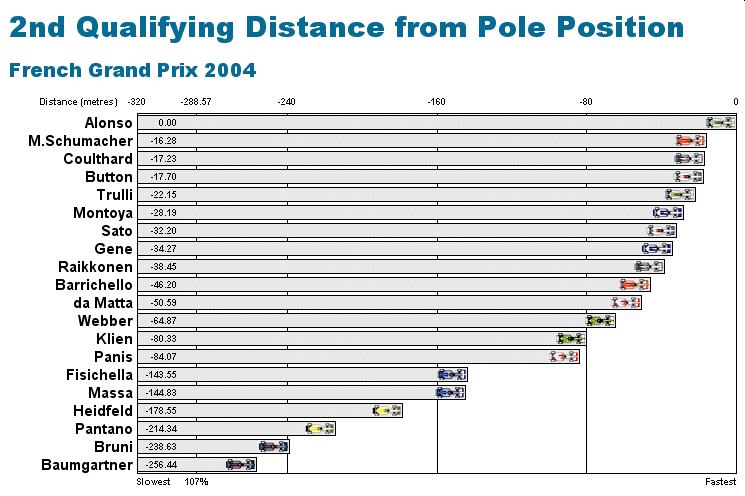
Chart III: The following chart shows how much further the GP winner travelled, in the time needed to take the checkered flag, compared to the other drivers. Drivers that were classified without finishing the GP, are shown with a clash icon, and are included based on their last lap.
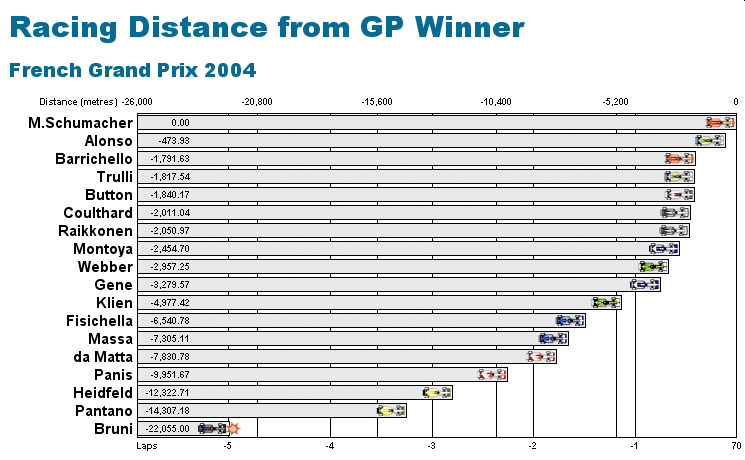
Chart IV: The following chart shows the actual difference in distance between the driver with the fastest lap of the race and the rest of the field - taking into consideration the circuit's lap length and the best lap time each driver has set during the race. If the driver with the fastest lap completes a full lap in the fastest time, then all other drivers will complete less than a full lap in the very same time. The slower they are, the less distance they will be able to complete at the same time as the driver with the fastest lap. The difference is therefore displayed in metres.
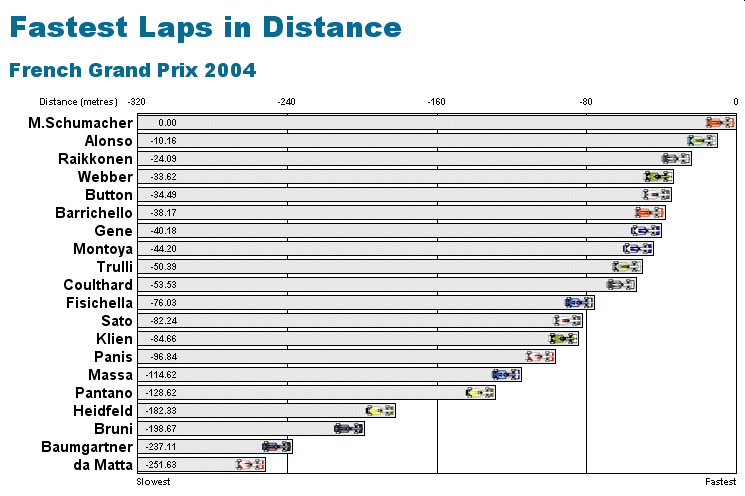
2004 Review Charts
Chart I: The following chart shows the average position in the first qualifying session for each driver this season.
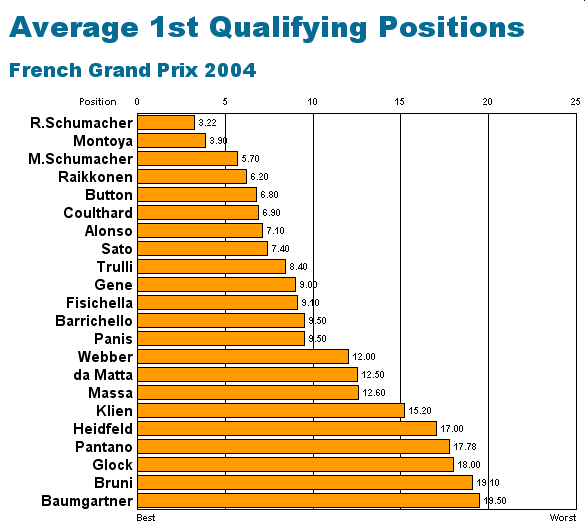
Chart II: The following chart shows the average position in the second qualifying session for each driver this season.
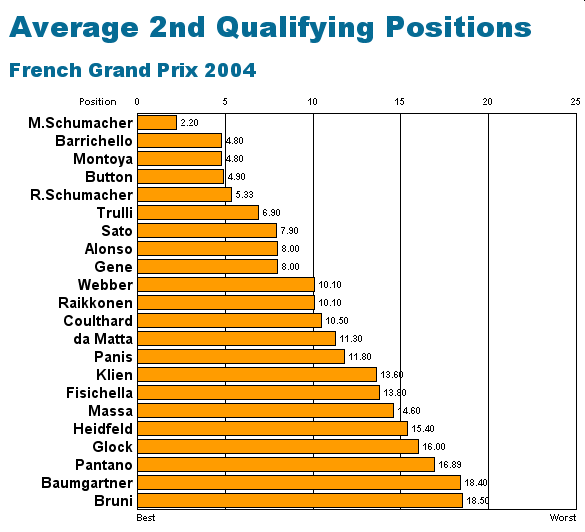
Chart III: The following chart shows the average position in both qualifying sessions combined for each driver this season. In case of a tie, the driver with the best average in the 2nd qualifying session is ranked first.
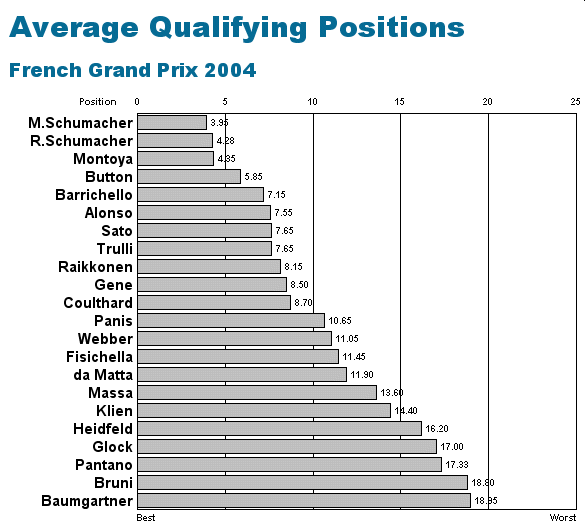
Chart IV: The following chart shows the average finishing position for each driver this season. The finishing positions for drivers not classified in a race are arranged based on the number of laps they completed and the time it took to complete them.
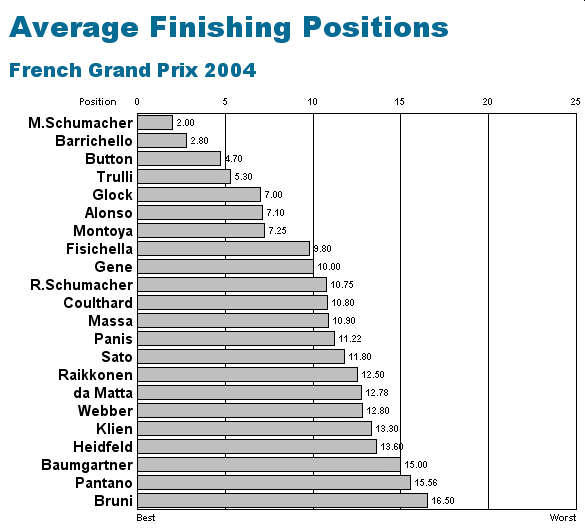
Chart V: The following chart shows how the World Championship points are distributed among the drivers and the teams this season.
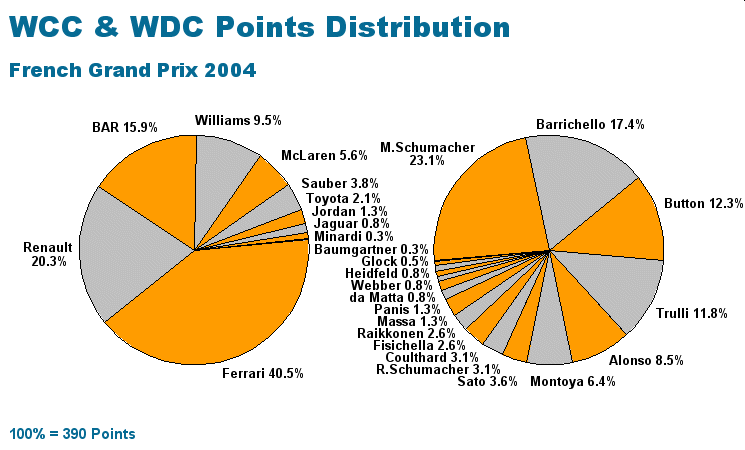
|
Contact the Author Contact the Editor |
Please Contact Us for permission to republish this or any other material from Atlas F1.